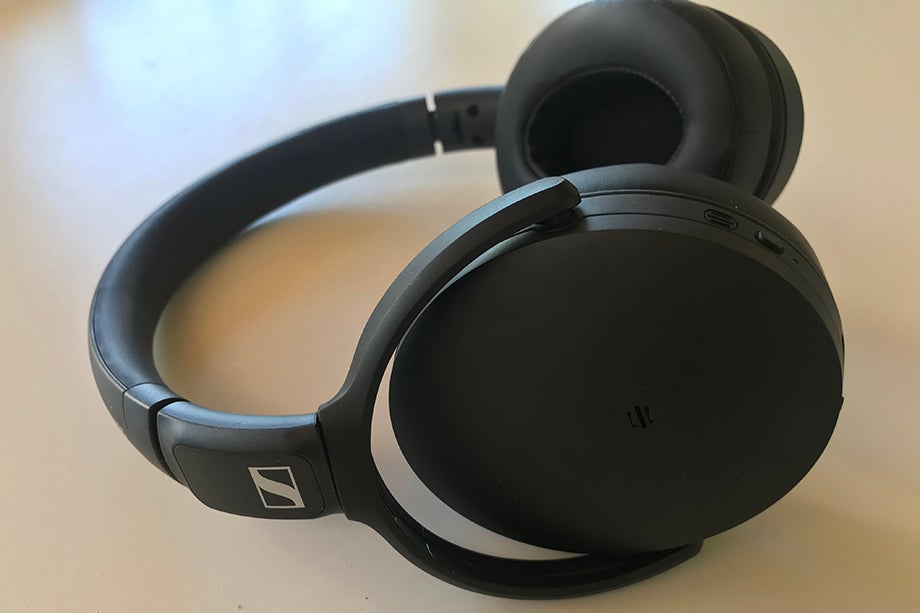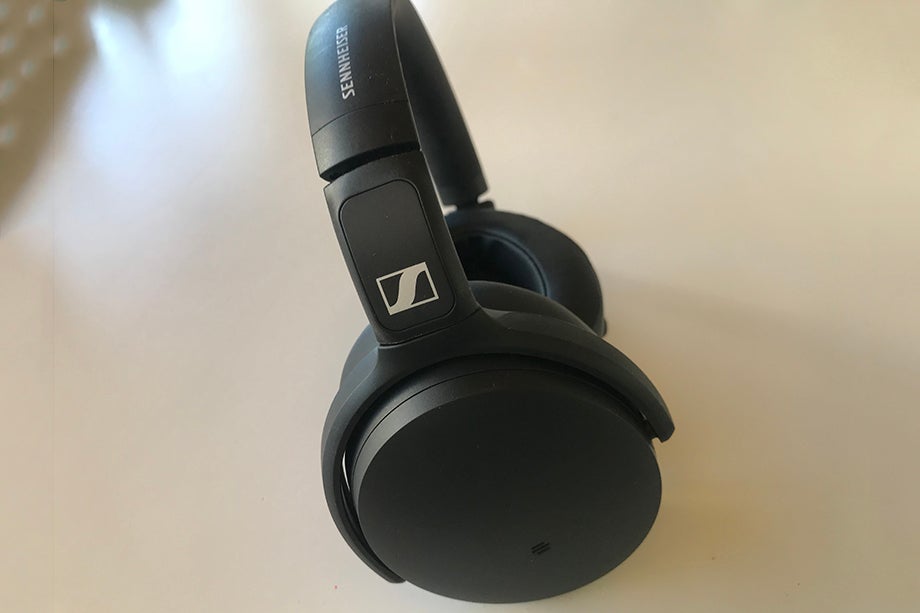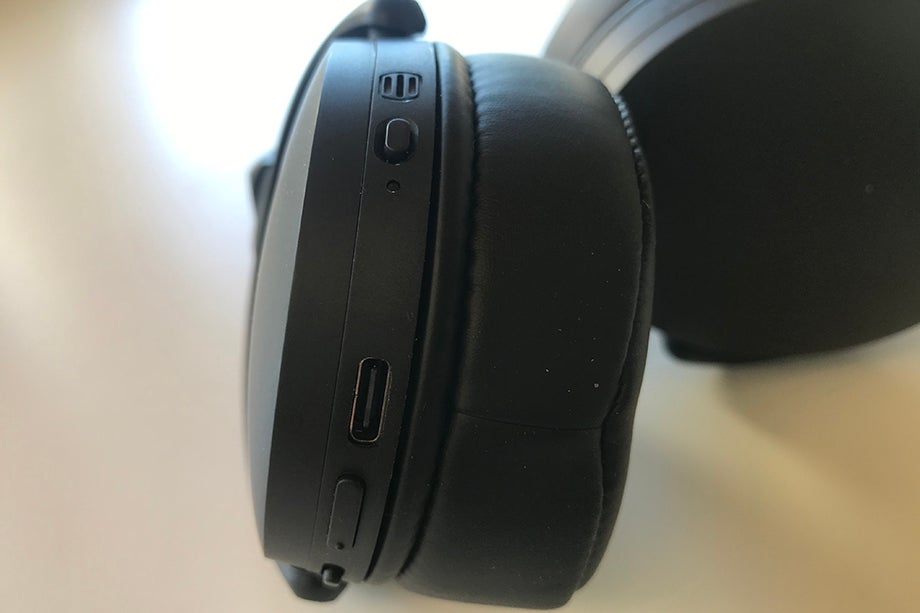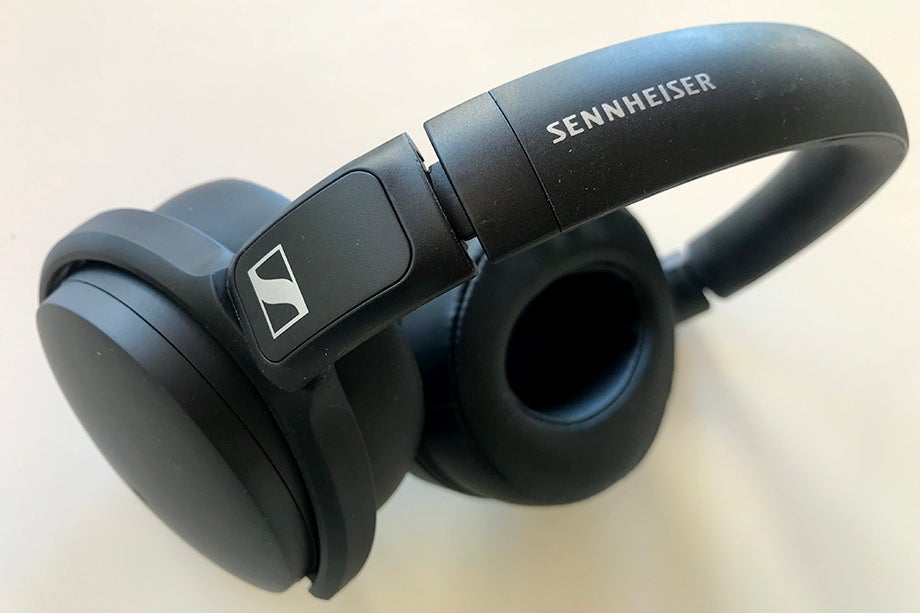Sennheiser HD 350BT Review
Sennheiser HD 350BT Review
Price-tag defying audio performance make it easier to see beyond these headphones' shortcomings

Verdict
If you’re working within a tighter budget and can live with the 350’s limitations, there isn’t another set of Bluetooth on-ears that currently offer this sort of rich audio experience for such a low price.
Pros
- Satisfying, well-balanced sound
- Modest price-tag
- Ridiculously long battery life
Cons
- Lack of 3.5mm input limits their use
- Built-in mics deliver poor call quality
- Limited EQ settings
Key Specifications
- Review Price: £89.99
- Weight: 238 g
- Bluetooth 5.0
- SBC, AAC, aptX, aptX Low Latency
- 30 hour battery life
With much recent fuss made over its much-lauded premium all-rounder Momentum Wireless 3’s and their travel-focussed PXC 550-II’s, it’s easy to overlook that Sennheiser also caters for leaner budgets in the HD 350BT.
The German firm’s latest run of its affordable HD line of wireless cans promise similar sound to their top tier headline-grabbers, but with select features and certain trimmings pared back.
The range features two models – the noise cancelling HD 450BT and the cheaper HD 350BT, which lacks active noise-cancelling.
We came away pretty impressed with the HD 450BT’s, but do the HD 350BT offer even better value, or do the further refinements go that bit too far?
Sennheiser HD 350BT design — Lacks the premium feel of upper tier Sennheisers
Coming in both white and black options, the HD 350BT look every bit like a premium-tier set of cans, taking their minimalistic design cues from Sennheiser’s discontinued HD 4.50BTNC – the now three-year-old ANC cans the 450 BT’s replace.
In hand, and on closer inspection, the moulded plastic construction lacks the premium soft-touch smooth finish of the higher ranking Sennheisers. They nevertheless feel sturdy, with plenty of give when stretched out. While the can’ shells and band may not have upmarket material and trimmings, it does mean they’re comparatively light.
Placed side by side with the HD 450BT, the only immediate difference in appearance is the 350BT’s lack of silver trim running above both hinges. Fully foldable, they collapse into an easily stowed form that won’t take up too much rucksack space. While we’re on the subject of bags, it’s worth noting that unlike the 450BT, it’s disappointing to find the 350BT’s don’t come with a protective zip-up pouch.

It’s a mixed bag in terms of comfort, too. While the HD 350BT’s ear cups can’t boast fancy memory foam or plush leather covers, the leatherette finish does look and feels like a good quality compromise, with the somewhat standard foam padding offering just the right amount of bounce and flex.
The headband’s moderate clamping force – which strikes a good balance between being snug and secure – coupled with their modest overall weight, and you have a set of cans that caused minimal fatigue during long sessions of use with negligible amounts of sound leakage.
There is a proviso here, however, if you’re blessed with larger ears you may want to try a pair on before dropping the readies, as the cans are on the smaller size for this type of over ear. We also found that the replaceable leatherette pads would become relatively warm during prolonged use which may prove an issue during summer months.
While we’re increasingly seeing touch and gesture controls on headphones, it makes a nice change to see the 350BT’s sport a set of reassuring physical buttons less prone to accidental presses. All of the controls are clustered in a somewhat cramped line on the right cup. Alongside a power and Bluetooth pairing button there’s a rocker volume control, plus a multi-direction playback controller that’s also used to accept and reject calls, and finally a USB-C port.

Our early experiences saw us fumbling about to find the right buttons and accidentally hanging up on calls, but while they may not have the most intuitive layout, using the 350BT’s controls was something we did find ourselves getting used to over time.
While the HD 350BT’s built-in mic array allows you to take calls, you’ll likely want to disconnect them if you’re not looking to annoy the person on the other end of the phone. The 350BT’s attempts to isolate your voice, particularly in outdoor environments, delivers harsh, over-amplified results, rendering your voice in a raspy, often hard to understand mess.
While it’s a criticism that could also be fairly levelled at many more expensive headphones where hands-free features still often feel like an afterthought, we nevertheless would expect better performance here, even at the 350BT’s modest price point.
Related: Best Headphones
Sennheiser HD 350BT features — Long battery life but light on smart features
Similar to Bose’s wireless headphone lineup, the HD 350BT offer up genuinely useful audible status alerts when first switched on, letting you know how many hours of battery remaining and if a Bluetooth device is connected. You’ll get warnings when you’re almost out of juice and when a device has become disconnected.
However, while we’re beginning to see advanced integration for the likes of Alexa and Google Assistant in lower-tier headphones, pressing the HD 350BT’s dedicated button will only activate your mobile device’s native voice assistant, meaning smart controls are somewhat limited.
All wireless bases are pretty much covered with Bluetooth 5.0, SBC, AAC, as well as higher quality aptX. Of most significance to those who watch video will be aptX Low Latency codecs, which worked well in providing lag-free audio synchronization when watching Netflix and YouTube, with no noticeable lip sync issues when watching high bandwidth content. Sennheiser’s advertised wireless range of 15 metres also held up, with no drop outs even through dense walls while wandering over 50 feet around the house.

Firmware updates and equaliser adjustments (more on this later) are handled via Sennheiser’s neat, but very limited Smart Control app (iOS and Android) that’s used across the brand’s wireless headphone range.
While it’s not a huge surprise to find common features like no audio passthrough, or auto off when the cans are folded, one glaring omission stands as the HD 350BT’s most contentious concession. Unlike the HD 450BT, the 350BT’s don’t offer a 3.5mm headphone jack. Although their extra-long life battery may mean you’re less likely to get caught short while on the go, it’s nevertheless a huge pity not to have the option to plug headphones into non-wireless devices.
One area where the 350BT’s do excel in is their battery life. Sennheiser’s advertised runtime of 40 hours slightly undersold their stamina in our testing, with the 350BT’s able to eke out a couple of hours beyond that number when streaming a continuous loop from Spotify at around 70 per cent volume. A full replenish of the cans via the USB-C cable took just over two hours.
Related: Best wireless headphones
Sennheiser 350BT sound quality — A detailed, full-bodied sound that punches above its price
At this point, even when factoring in their attractive RRP and their excellent battery life, the HD 350BT’s sound like a disappointment. Thankfully they have a major saving grace up their sleeve.
Hitting the spot where it matters most, the 350BT’s deliver a detailed, full-bodied sound that belies their price tag. While the bass profile is slightly extended, it isn’t to an offensive level , with a mild hint of sub and pleasant helpings of mid-level low end and no significant amounts of flub or muddiness when pushed hard.
The snappy drums of Caribou’s Home really show off 350BT’s fine-tuned balance of clarity and liveliness, with positively sparkling high frequencies that don’t ever bite. Soundstage performance is also way beyond expectations, with the 350BT’s delivering plenty of depth and separation when challenged with the varied instrumentation of Bjork’s Hunter.

For better or for worse, the lack of noise cancellation means there’s also a consistency to the HD 350 BTs sound compared to its bigger brother – the 450 BT’s have a noticeable preamp-like bump when ANC is engaged which makes bass frequencies slightly more pronounced. It’s also worth noting that the 350BT’s have rather good natural sound isolation, which may render the ANC of the HD 450BT unnecessary for less frequent travellers.
The excellence of their out-of-the-box tuning also means you’ll not likely need to do too much tweaking to get pleasing results, which is just as well as the EQ feature on Sennheiser’s leaves quite a bit to be desired. Pretty but ineffective, it offers a simple, bouncing curve that only has one point of movement across the bandwidth, meaning granular adjustments aren’t an option.
Related: Best noise-cancelling headphones
Should you buy the Sennheiser HD 350BT?
In terms of non-noise cancelling competitors, the HD 350BT’s feature set places it alongside the likes of Sony’s WH-H800 h.ear on 2 Mini Wireless, Beats Solo3 Wireless and Bose’s venerable SoundLink II’s. All three boast slicker trimmings, while the latter two have significantly larger asking prices, but all fall short of the Sennheiser’s audio performance for our money.
The lack of a wired connection may well be a deal-breaker for many, but with a number of retailers already offering the 350BT at prices well under £80, it’s hard to think of any other set of headphones that offer such a satisfying sound at such a low price.


